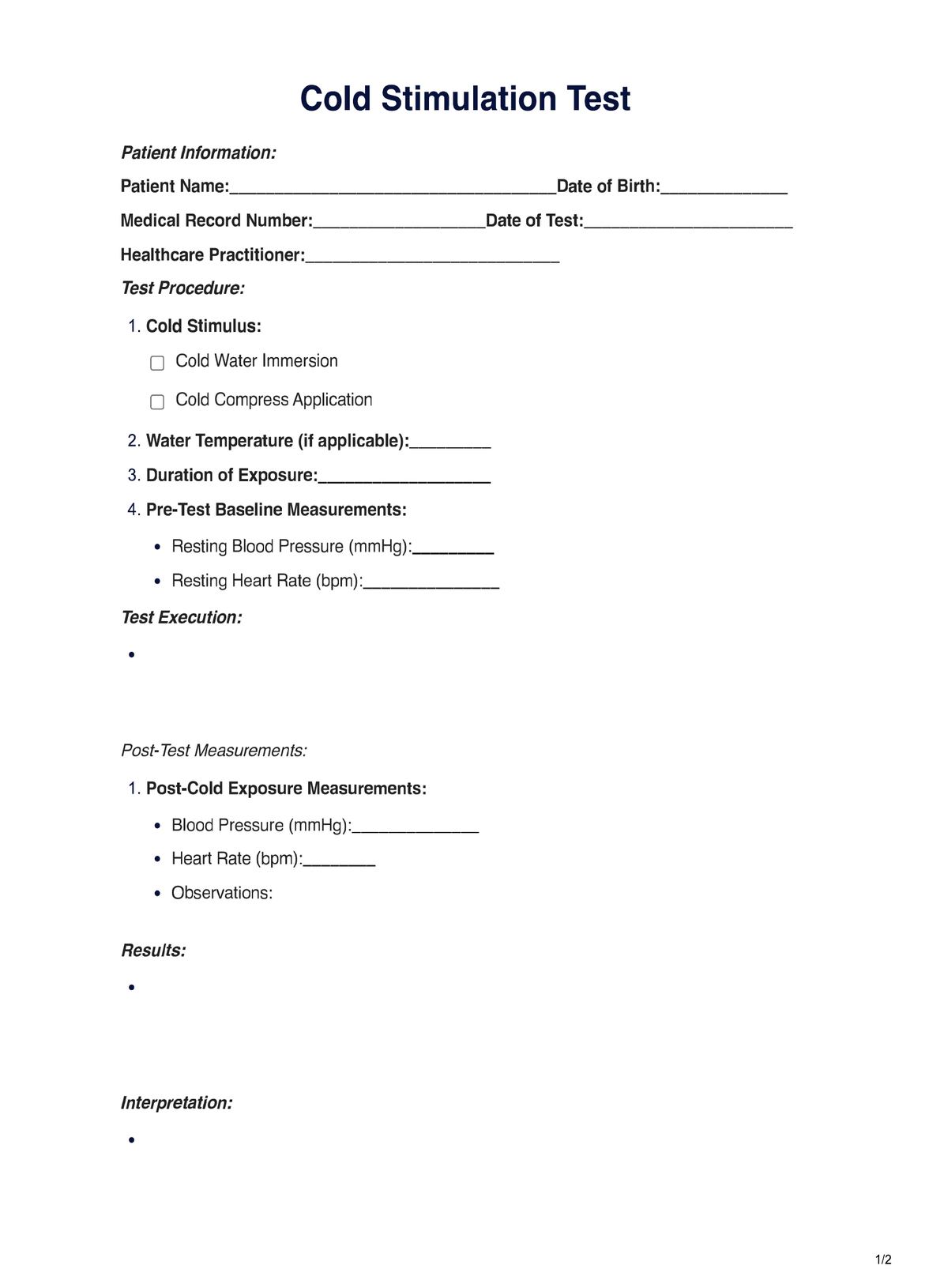It is performed to diagnose and monitor various medical conditions, including autonomic dysfunction, Raynaud's disease, and vascular disorders. It helps healthcare practitioners understand how the body reacts to cold exposure.

Cold Stimulation
Learn about the healthcare benefits of the Cold Stimulation Test, assessing responses to cold stimuli for diagnostic insights.
Use Template
Cold Stimulation Template
Commonly asked questions
The test typically involves immersing a patient's hand or limb in cold water or applying a cold compress for a specified duration. Blood pressure, heart rate, and other physiological parameters are monitored during and after the exposure.
The test may cause discomfort due to the cold sensation, but it is generally not considered painful. Patients may experience sensations like tingling or mild discomfort during the test.
EHR and practice management software
Get started for free
*No credit card required
Free
$0/usd
Unlimited clients
Telehealth
1GB of storage
Client portal text
Automated billing and online payments











